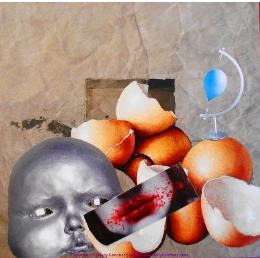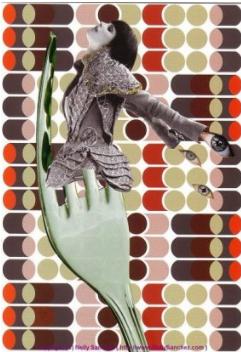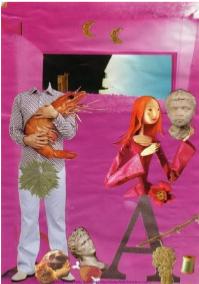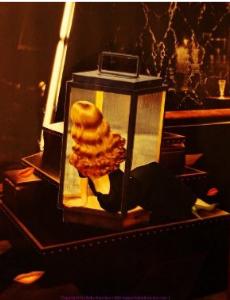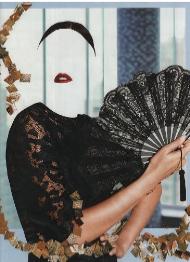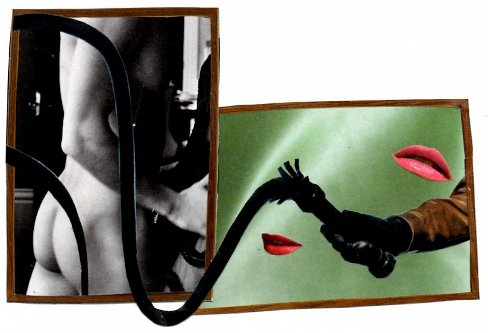RK. Are you inspired by any particular artists or art movements? Is there anyone/anything outside the world of art that inspires you?
NS. Surrealism inspires me because this movement smashed the rules of classical art and looked past the mundane to dreams and the unconscious.
Like Frida Khalo or Leonora Carrington, I play with symbols and with representations of femininity.
The images I use for my collages come from women's magazines. The world depicted in those pages is very interesting; sophisticated, shiny, politically correct, yet tyrannical. I like to deform those images, that perfection, to create my own world. Beneath the superficiality, dreams grow wild.


